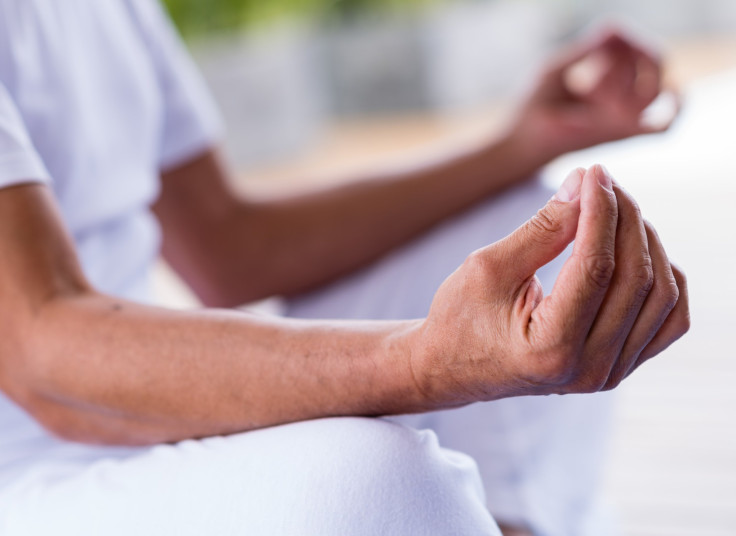The Most Relaxing Yoga Poses To Help Fight Depression, Anxiety

Yoga is a therapeutic practice that’s been known to relax the body and calm the mind. But you don’t need to tie yourself up in a pretzel to experience the antidepressant benefits, according to a new study. Researchers analyzed the top six relaxation techniques and have found yoga is the most effective way to alleviate depression. If you throw music in the mix, it’s also great for anxiety.
The ancient Indian practice of yoga has been improving the mind-body connection under the guise of a distinct philosophy for over 5,000 years through breathing, posture, and meditation exercises. While the benefits have already been studied, researchers of the new study looked at which ones provided the most relaxation by comparing 15 studies over the last 20 years. The most relaxing technique, they found, is called progressive muscle relaxation training (PMRT), and it may be able to treat anxiety and depression in yogis 60 years and older.
“It could help counterbalance the negative effects of aging, improve physical functioning, postpone disability, decrease morbidity and mortality, stimulate the mind, and increase hope, reducing the risk of anxiety and depression,” the authors wrote, according to Time. “It is believed that the PMRT has a tranquilizing effect, triggers a sense of peacefulness, helps participants retreat mentally from their problems, and curtails negative thoughts, reducing depressive symptoms.”
PMRT, is a yoga technique that engages major muscle groups and then relaxes them one at a time in order to bring awareness of tension and relief to the body and mind, according to the National Center for Complementary and Alternative Medicines (NCCAM). In the study, the positive effects of the technique lingered up to six months after the initial practice of stretching, breathing, and meditation involved in PMRT postures. Researchers found the antidepressant benefits trumped basic yoga, listening to music, flexing and relaxing different muscle groups, massage therapy, and stress management training.
The Power of Practicing PMRT
Reap the benefits of PMRT with a step-by-step yoga guide provided by NCCAM. First, throw on some loose clothing, assume a comfortable position, and close your eyes. Flex and release each of the following muscle groups, in this order, for five seconds: forehead, eyes, nose, lips, jaw, cheeks, hands, forearms, upper arms, shoulders, back, stomach, hips, buttocks, thighs, feet, and toes. After assessing each muscle, redo any groups that may still feel tight for three to four more sets.
When you move through each muscle group, allow your mind to release heavy thoughts as you release tension in each muscle. Reduce anxiety by playing music you personally find relaxing and allow it to drive the beat of your flexing. More than 20 million people practice yoga every day, according to Harvard University, and with proven mental and physical benefits, more people may join in.
Source: Lau Y, Klainin-Yobas P, Oo WN, and Yew YS. Effects of relaxation interventions on depression and anxiety among older adults: a systematic review. Aging & Mental Health. 2015.



























